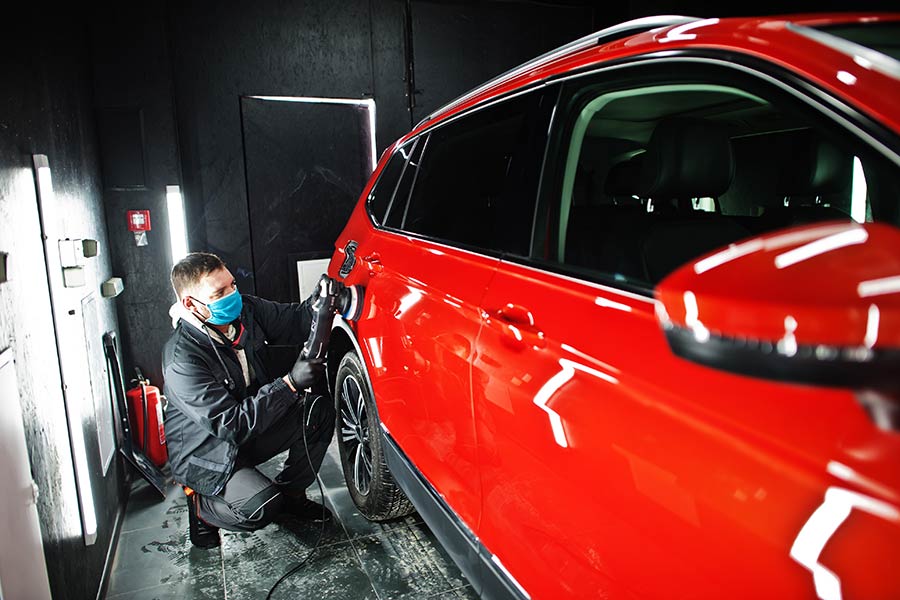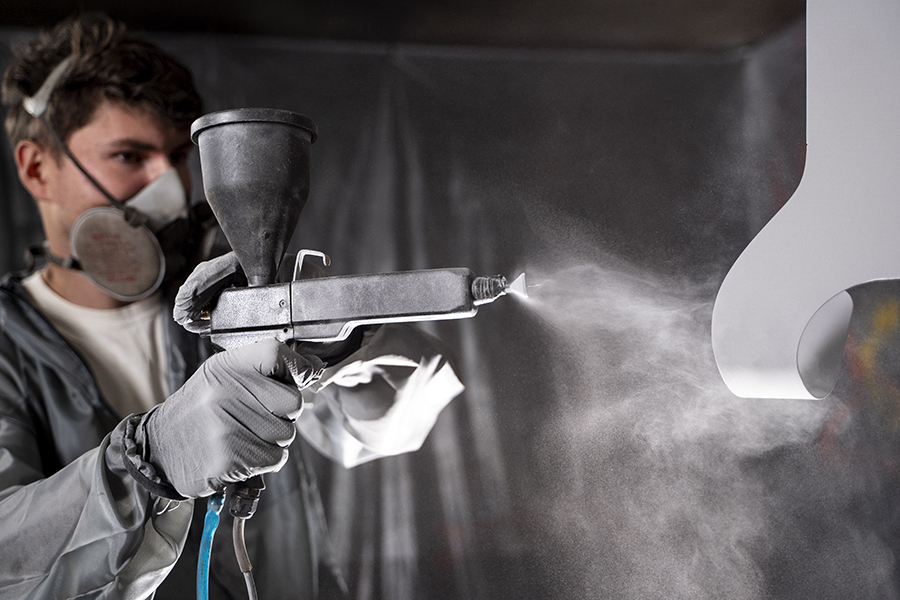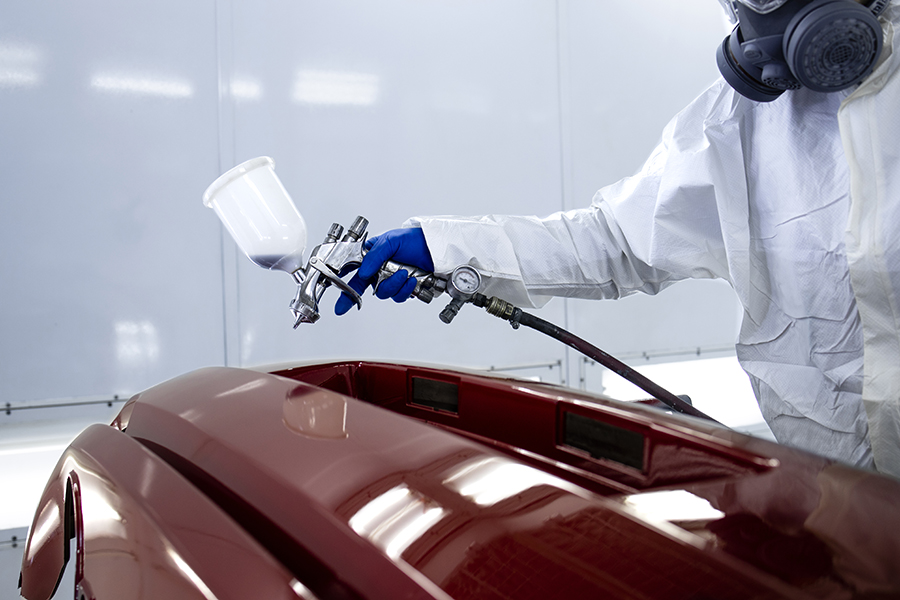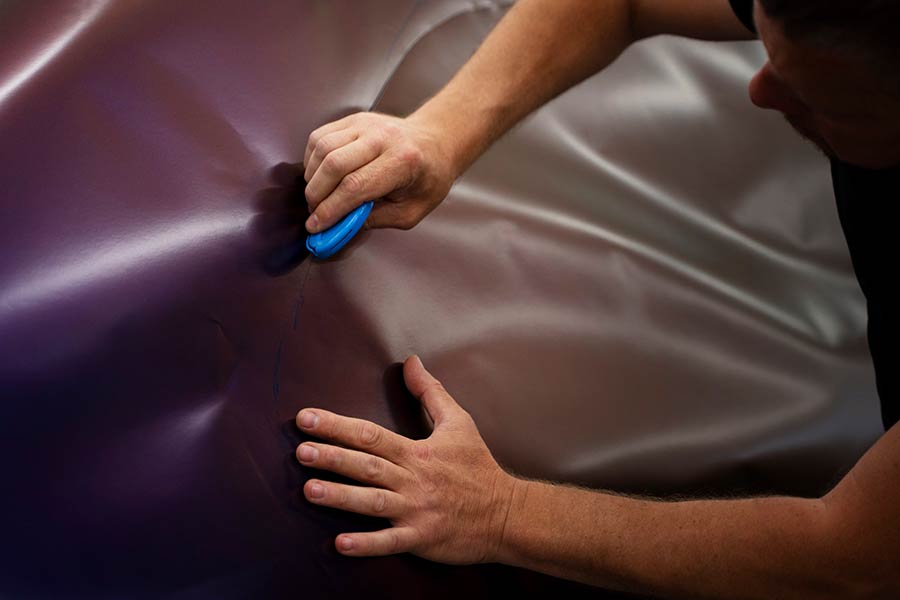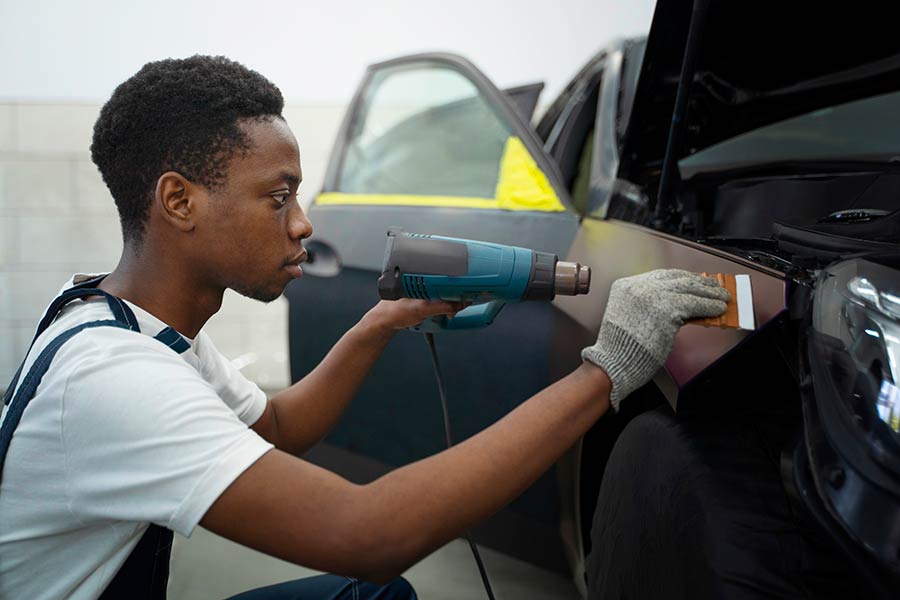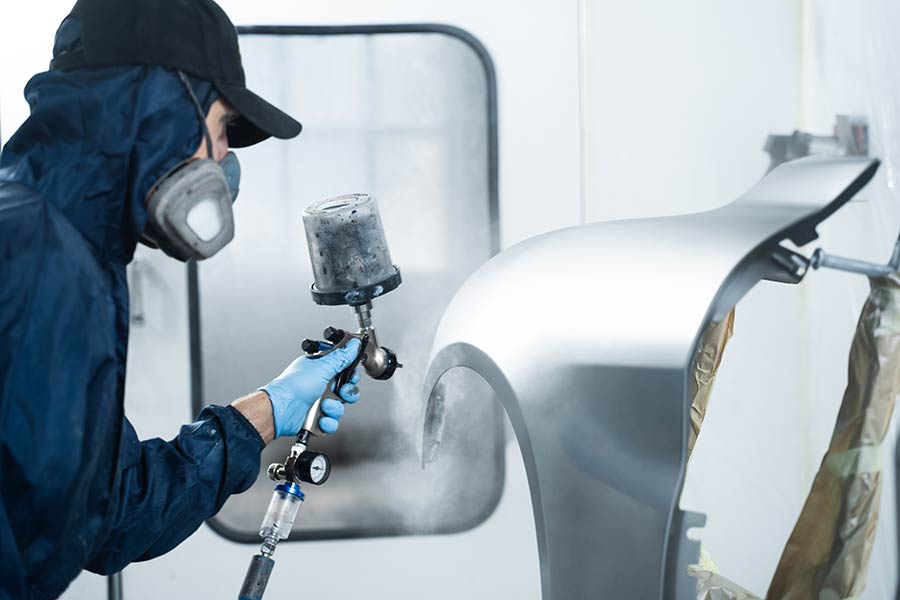Did you know that the average car owner spends $2,500 on paint repairs during their vehicle’s lifetime?
That small scratch or chip might seem minor today, but left untreated, it can lead to rust, corrosion, and expensive repairs down the road. From parking lot dings to weather damage, your car’s paint faces countless threats every day.
We’ve seen thousands of paint problems in our years of automotive work, and here’s the good news: almost every car paint fix has a solution. Whether you’re dealing with a tiny scratch or major paint damage, the right approach can restore your car’s finish to its original glory.
In this guide, we’ll walk you through everything you need to know about fixing car paint problems. From DIY methods to professional services, we’ll help you choose the best solution for your specific situation. Let’s get your car looking showroom-ready again!
Paint Damage Assessment
Let’s start by looking at your car’s paint damage closely. I’ve found that understanding what you’re dealing with is half the battle in fixing paint problems effectively.
Common Types of Paint Damage
When I examine paint damage, I group them into three main categories:
| Damage Type | Characteristics | Typical Causes |
|---|---|---|
| Clear Coat | Surface-level scratches, dulling | Weather, improper washing |
| Paint Layer | Color-deep scratches, chips | Rocks, minor impacts |
| Primer Level | Deep scratches, exposed metal | Severe impacts, deep scratches |
Evaluating Repair Difficulty
I always check these key factors when looking at paint damage:
- Paint color matching needs
- Depth of the damage
- Size of the affected area
- Number of panels involved
- Current paint condition
When to DIY vs Professional Help
I’ve learned that making the right choice between DIY and professional help comes down to the damage severity. You can handle minor clear coat scratches and small chips at home. But when I see damage that goes down to the primer or spans multiple panels, I recommend professional help.
The deciding factors should be your skill level and the tools you have. If you’re new to car paint fixes, start with small, surface-level repairs. For deep scratches that show metal or damages larger than your palm, getting professional help will save you time and money in the long run.
Remember, paint damage isn’t just about looks. When I spot exposed metal or deep scratches, I know they need immediate attention to prevent rust and further damage. That’s why taking time to assess the damage properly is crucial for choosing the right repair method.
DIY Paint Repair Methods
I’ve fixed hundreds of car paint problems, and I’m going to show you exactly how to handle repairs yourself. After assessing your paint damage, let’s get into the practical steps of fixing it.
Tools and Materials Required
Here’s what I always keep in my paint repair kit:
| Essential Tools | Basic Materials | Safety Equipment |
|---|---|---|
| Sandpaper (1000-2000 grit) | Touch-up paint | Respirator mask |
| Microfiber cloths | Primer | Safety goggles |
| Paint sprayer | Clear coat | Protective gloves |
| Buffer | Car wash soap | Paint suit |
| Masking tape | Rubbing compound | Face shield |
Step-by-Step Repair Process
-
Clean the Area * Wash with car soap * Dry completely with microfiber cloth * Remove wax with rubbing alcohol
-
Prepare the Surface * Sand the damaged area * Clean off dust and debris * Apply masking tape around repair zone
-
Apply Paint * Start with primer (2-3 coats) * Add color-matched paint * Finish with clear coat
Safety Precautions
Your safety comes first in any paint repair job. I always follow these crucial steps:
- Work in a well-ventilated area with proper airflow
- Wear a paint-grade respirator mask
- Put on protective eyewear and gloves
- Keep a fire extinguisher nearby
- Store paint materials in fireproof containers
- Remove all ignition sources from the work area
Remember, taking shortcuts with safety isn’t worth the risk. I’ve seen too many DIY jobs go wrong because someone skipped proper protection. When you’re working with automotive paints and solvents, proper ventilation and safety gear aren’t optional - they’re essential.
Professional Repair Options
When DIY methods aren’t enough for your car paint fix needs, I recommend looking at professional options. After working with numerous repair services, I can tell you that choosing the right professional solution makes all the difference in the final results.
Body Shop Services
Professional body shops are my go-to recommendation for major paint repairs. These facilities offer:
- Factory-grade paint matching systems
- Professional spray booths
- Multi-stage paint application
- Expert color blending
- Paint warranties (typically 3-5 years)
Mobile Paint Repair Services
I’ve seen mobile paint services transform from a convenience option to a legitimate professional solution. These services bring the repair shop to your location, which is perfect for busy car owners. The best mobile services use professional-grade equipment and offer results comparable to traditional body shops for minor to medium repairs.
Cost Comparison Guide
Based on my experience working with various repair services, here’s what you can expect to pay:
| Service Level | Price Range | What’s Included |
|---|---|---|
| Basic Paint Fix | $500-$1,000 | Single-stage paint, minimal prep |
| Standard Service | $1,000-$5,000 | Better prep, multiple coats |
| Premium Package | $5,000-$10,000 | Full preparation, premium materials |
I always tell my clients that the final cost depends on: * Size of the damaged area * Paint type and color matching needs * Required preparation work * Location and shop overhead costs
When picking between body shops and mobile services, I look at three main factors: damage severity, budget, and convenience needs. For deep scratches or multi-panel damage, I recommend traditional body shops. For minor repairs and touch-ups, mobile services often provide excellent value.
Remember, quality paint work isn’t cheap, but it’s an investment in your car’s value and appearance. I’ve seen $3,000 paint jobs last 10+ years with proper care, while $500 quick fixes often need redoing within months.
Paint Protection Strategies
After fixing paint damage, I always tell my clients that prevention is worth every penny. Through my years of experience, I’ve learned the best strategies to keep your car’s paint looking fresh and damage-free.
Protective Coatings and Films
I’ve tested numerous protection options, and here’s what works best:
| Protection Type | Duration | Best For |
|---|---|---|
| Ceramic Coating | 3-5 years | UV and chemical protection |
| Paint Protection Film | 5-10 years | Rock chips and scratches |
| Paint Sealant | 6-12 months | Basic protection |
| Natural Wax | 2-4 months | Deep shine and gloss |
Regular Maintenance Tips
I’ve developed this maintenance schedule that’s proven effective for my clients:
- Weekly Tasks
- Gentle wash with pH-neutral soap
- Quick detail spray application
- Bird dropping removal within hours
- Monthly Tasks
- Paint surface inspection
- Wax or sealant check
- Deep cleaning of problem areas
Paint-Safe Cleaning Methods
I start every cleaning session with cool panels in a shaded area. Here’s my tried-and-tested process: First, I use two buckets - one for soap, one for rinsing. This method has saved countless cars from swirl marks.
For washing, I always pick plush microfiber mitts over flat weave towels. They’re gentler on the paint and trap dirt better. When drying, I use waffle-weave microfiber towels or a quality chamois - never regular towels that can scratch.
I’ve found that many paint problems start with improper washing techniques. That’s why I recommend using a quality car shampoo that won’t strip existing protection. For stubborn spots, I apply a dedicated bug and tar remover instead of scrubbing, which can damage the paint.
For weekly maintenance, I suggest using a quick detail spray between washes. This helps remove fingerprints and light dust while adding an extra layer of protection. In areas with water restrictions, I’ve had great success with waterless wash products, but proper technique is crucial.
Remember, the goal isn’t just cleaning - it’s maintaining your paint’s protective layers. That’s why I always finish with a spray sealant to add extra protection between major coating applications.
Advanced Paint Technologies
I’m seeing remarkable changes in automotive paint technology. Working with these innovations daily, I can tell you they’re transforming how we protect and repair car paint.
Modern Paint Systems
The paint on today’s cars is different from what I worked with just a decade ago. Modern vehicles now use water-based acrylic polyurethane enamel paint, which I find superior to older solvent-based systems. Here’s what makes it special:
| Feature | Benefit |
|---|---|
| Water-based Formula | 90% less harmful emissions |
| Acrylic-Polyurethane Mix | Better scratch resistance |
| Multiple Layers | Total thickness of 100 μm |
| UV-resistant Clear Coat | Long-lasting protection |
Smart Paint Protection
I’ve watched paint protection evolve into something truly remarkable. The latest systems combine multiple technologies:
- Ceramic-coated PPF that stops rock chips while adding hydrophobic properties
- Self-healing films that remove minor scratches with heat
- Multi-layer protection systems lasting up to 10 years
- UV-blocking technology preventing paint oxidation
New Repair Techniques
The way I fix car paint has changed dramatically with new technology. Modern repair methods now include:
-
Electro-Coat Paint Operation (ELPO): * 99.9% paint application efficiency * Superior salt spray resistance * Eco-friendly process
-
Hybrid Application Methods: * Combined waterborne and powder coating * Reduced energy consumption * Better color matching
I’m particularly impressed with the new 3-Wet process that’s changing how manufacturers apply paint. Instead of multiple baking stages, it allows three layers of paint to be applied wet-on-wet, saving time and energy while maintaining quality.
These advanced technologies mean better results for my clients. When I apply these modern solutions, I see cars maintaining their shine longer and resisting damage better than ever before. The combination of improved paint chemistry and smart protection means fewer touch-ups and repairs over time.
Conclusion
Car paint problems might seem daunting, but my years of experience show that every issue has a solution. Small scratches need quick attention before they become major headaches, while deeper damage requires professional expertise.
My work with thousands of vehicles proves that proper paint care combines smart prevention with timely repairs. Regular maintenance, quality protective coatings, and correct washing techniques keep your car’s finish looking fresh. Modern paint technologies offer better durability and protection than ever before.
Ready to fix your car’s paint issues? Schedule Repair with a trusted professional or start with DIY solutions based on your damage assessment. Remember, paint protection isn’t just about looks - it’s an investment in your car’s long-term value.
Your car deserves proper paint care, and now you have the knowledge to make informed decisions about repairs and protection. Start with thorough damage assessment, choose appropriate repair methods, and maintain regular protection - these steps will keep your car’s finish looking showroom-fresh for years.
## FAQs
-
How much does it typically cost to repair car paint damage? The cost of car paint repair can vary widely depending on the extent of the damage and the chosen repair method. DIY fixes for minor scratches can be relatively inexpensive, while professional repairs can range from $500 for basic paint fixes to $10,000 for premium packages. On average, car owners spend about $2,500 on paint repairs during their vehicle’s lifetime.
-
When should I opt for professional paint repair instead of DIY? Professional help is recommended for deep scratches that expose metal, damage larger than your palm, or issues spanning multiple panels. If you’re new to car paint fixes, it’s best to start with small, surface-level repairs at home. For more severe damage, professional services can save you time and money in the long run, ensuring a high-quality finish.
-
What are the essential tools and materials needed for DIY car paint repair? For DIY paint repair, you’ll need sandpaper (1000-2000 grit), microfiber cloths, a paint sprayer, buffer, masking tape, touch-up paint, primer, clear coat, car wash soap, and rubbing compound. Don’t forget safety equipment like a respirator mask, safety goggles, protective gloves, and a paint suit.
-
How can I protect my car’s paint from future damage? To protect your car’s paint, consider applying protective coatings like ceramic coating or paint protection film. Regular maintenance is crucial, including weekly gentle washes with pH-neutral soap, quick detail spray applications, and prompt removal of bird droppings. Monthly tasks should include paint surface inspection and wax or sealant checks.
-
What are the latest advancements in car paint technology? Modern car paint systems now use water-based acrylic polyurethane enamel, which offers better scratch resistance and UV protection. Advanced protection methods include ceramic-coated PPF (Paint Protection Film), self-healing films, and multi-layer protection systems lasting up to 10 years. New repair techniques like the Electro-Coat Paint Operation (ELPO) and hybrid application methods are also improving paint quality and durability.
-
How often should I wax or seal my car’s paint? The frequency of waxing or sealing depends on the product used. Natural waxes typically last 2-4 months, while paint sealants can protect for 6-12 months. Ceramic coatings offer the longest protection, lasting 3-5 years. Regular inspections and maintenance can help determine when it’s time to reapply protection.
-
What’s the best way to wash my car without damaging the paint? To wash your car safely, start with cool panels in a shaded area. Use two buckets - one for soap and one for rinsing - to prevent swirl marks. Use plush microfiber mitts for washing and waffle-weave microfiber towels or a quality chamois for drying. Always use a pH-neutral car shampoo and avoid regular towels that can scratch the paint.
-
Can all types of paint damage be repaired? While most paint damage can be repaired, the method and outcome depend on the severity. Surface-level clear coat scratches and small chips are easily fixable, often with DIY methods. Deeper damage that reaches the primer or metal may require professional repair. In some extreme cases, a full panel repaint might be necessary.
